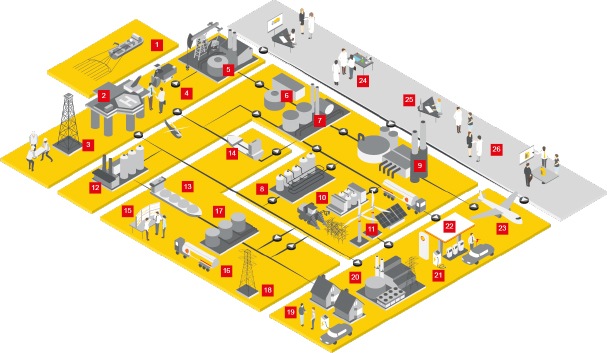Malaysia
4,538 Employees
-
Third-party revenues
$3,901,603,250
-
Related-party revenues
$1,656,480,146
-
Total revenues
$5,558,083,396
-
Profit before tax
$174,065,015
-
Tax paid
$90,025,350
-
Tax accrued
$182,089,196
-
Tangible assets
$4,017,453,066
-
Stated capital
$922,697,706
-
Accumulated earnings
$1,756,717,943
Main Business Activities
- Upstream and Integrated Gas
- Downstream
- Trading and Supply
- Other support activities
Shell has been present in Malaysia since 1891 and has a strong market presence in the upstream and downstream sectors. Shell has a number of production-sharing contracts (PSCs) for oil and gas production with deep-water platforms in Sabah. Shell Downstream operates around 960 retail sites throughout the country. Shell MDS (Malaysia) Sendirian Berhad (Shell MDS) converts natural gas into gas-to-liquids products. Shell MDS produces a wide range of high-quality waxes, specialty chemicals and transport fuels, which are marketed to more than 50 countries.
Country Financial Analysis
Shell pays corporate income tax at the rate of 24% for downstream entities and petroleum income tax of 38% for upstream entities.
Shell uses tax incentives offered by Malaysia. Some PSCs meet the criteria for the Investment Tax Allowance (ITA) incentive for qualifying capital expenditure incurred. In addition, the Marginal Field Tax Incentive (MFTI) provides accelerated capital allowances for expenditure incurred from 2010 to 2024 and reduces the effective tax rate from 38% to 25% for qualifying fields.
Revenues from third parties and profits for the year were lower because of the impact of the COVID-19 pandemic on the oil price, marketing volumes in our mobility business and lower demand for LNG.
Our Payments to Governments Report for 2020 also shows that Shell paid around $2.2 billion in production entitlements, royalties and fees.








